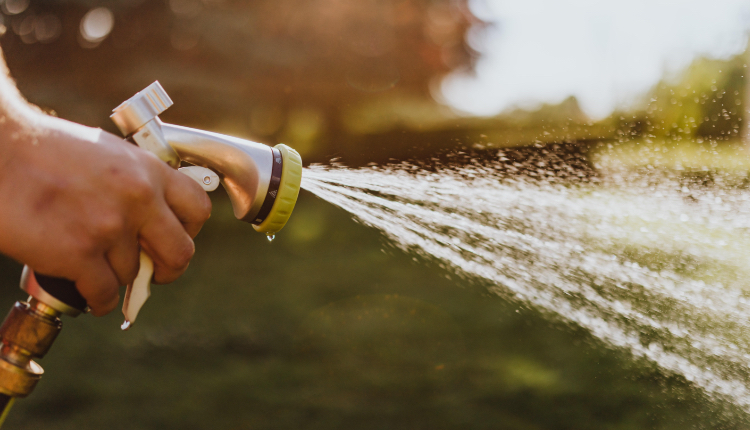
Water has been in short supply in many areas of the United States lately. And even if it’s bountiful where you live, you may be paying more for water than you’d like. Here are some tips for using less water and saving money in your garden.
Use Soaker Hoses Instead of Sprinklers
Sprinklers tend to use tons of water, often more than you need to water your garden. It’s the equivalent of taking a bath versus a shower when you just want to get clean quickly.
Try using soaker hoses, which have tiny perforations in them, to water your flower or vegetable beds slowly. It’s healthier for your plants, and you’ll use less water and have less wasted runoff too.
Install a Timer for Your Hose
How many times have you turned on the hose or the sprinkler, only to get distracted and come back hours later to find you’re now watering the asphalt? A timer for your watering system lets you limit water consumption. You can also use a timer to water when you’re not home (including on vacation) or while you’re asleep.
Water at Night or Early in the Morning
The most efficient time to water is at night or early morning. This is because, during the heat of the day, you lose water in the garden to evaporation. It then takes more water to achieve the same level of hydration, and it’s harder on your plants as well.
Recycle Greywater
Some folks who live in areas struggling with water supply recycle greywater, primarily from their laundry. Rather than sending rinse water from the washer to the sewer system or septic tank, they pipe it into the garden or a holding tank for later use.
Never use water that has been used to rinse food scraps or that comes from your toilet, as this can attract vermin. But laundry water, provided you use biodegradable detergent, is perfect for watering the garden.
Landscape With (Less Thirsty) Native Plants
The plants you choose for your garden have a great deal to do with how much water you use. If your water bill is high or if you’re in a drought area, try these tips:
- Eliminate or downsize your lawn. Replace it with a rock garden, xeriscaping, or hardscaping.
- Select plants that don’t require tons of water and fare well in sun and hot weather. Usually, plants native to your region will do better with less watering and can withstand weather fluctuations.
- Plant trees or tall shrubs that can provide shade for other plants.
- Garden in containers instead of in the ground or raised beds.
- Use soil that absorbs water well and top it with mulch or rocks to retain moisture.
Collect Rainwater
Collecting rainwater to use later can be a smart idea if you live in a rainy area or get monster storms passing through. There are multiple ways to do this, such as setting up a rain barrel beneath the downspout for your rain gutters or adding a catch basin to your landscaping. A catch basin like a dry well can divert water — to prevent ponding in the lawn or damage to your foundation — and send the water where it’s needed elsewhere in your garden. Just be sure to abide by the local regulations on rainwater collection, if there are any.
Your area’s rainfall or drought levels influence more than your garden, including your home’s foundation integrity, fire risk, and potential water damage. To learn more about how this affects your homeowner insurance, call Summit Insurance Agency at 406-926-2552, or get in touch online with your questions.
